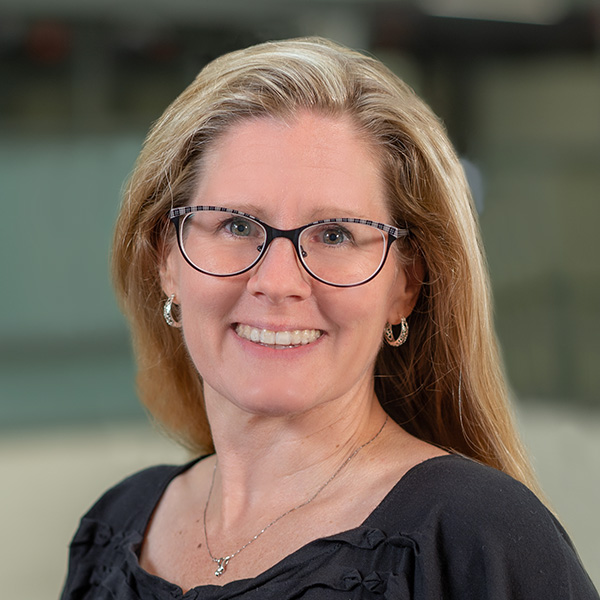As the ongoing pandemic impacted local communities and businesses across the U.S. in 2021, many small businesses — some longtime neighborhood fixtures — had to scale back operations while others faced closure because of lost revenue.
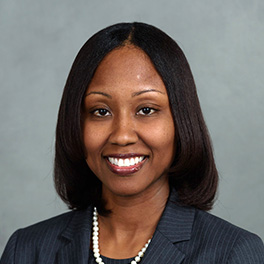
those who saw firsthand how local
businesses struggled.
“The calls were heartbreaking,” said Shaheewa Jarrett Gelin, president of the Broward County Black Chamber of Commerce in Florida. “Many owners were losing sleep, worried if their small businesses — their livelihoods — would survive the pandemic. Others told me about depleting their savings to keep afloat; whatever little revenue came in they would use to keep employees on the payroll.”
Gelin is a participant in the Philadelphia Fed’s 2021 Reinventing Our Communities (ROC) Cohort Program. Launched in 2020, the ROC program works with groups of community stakeholders to increase access to economic opportunity and encourage full participation in the economy at the local level.
“It’s become increasingly clear that we must address the structural barriers that limit the full economic potential of communities of color,” said Theresa Singleton. “Participation in the economy is essential to our mandate to ensure a healthy labor market and a strong overall economy.” As senior vice president and community affairs officer, Singleton oversees the Philadelphia Fed’s efforts to increase access to economic opportunity for low- and moderate-income communities.
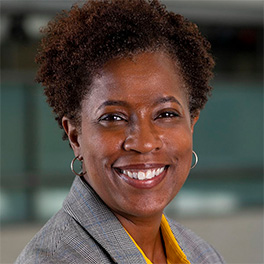
community development and
outreach efforts.
In partnership with the Federal Reserve Banks of Atlanta, Minneapolis, Richmond, and San Francisco, the 2021 ROC program drew more than 90 community members in nine localities across the U.S. Through a 10-month, immersive experience that included monthly trainings and workshops, the cross-sector cohorts developed racial equity plans to support small business sector recovery and growth in their own regions.
Some of their goals include better access to capital for small businesses; stronger relationships between funders and decision-makers who support small businesses; and systems designed to provide better access, not barriers, for entrepreneurs and small business owners of color. Others are targeting more inclusive and equitable representation in key decision-making roles and better connections to programs, resources, and shared data. While the Philadelphia Fed and other Reserve Banks offered support, each community created its own action plan, specifically tailored to meet the local needs they collectively identified through community discussion with small business owners of color and available local data.
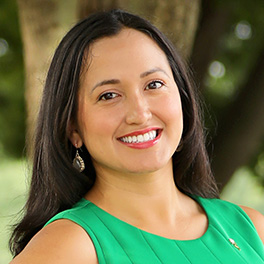
expand on York County’s economic
action plan.
“This program came at a perfect time,” said Sully Pinos, executive director of the BLOOM Business Empowerment Center of the York County Economic Alliance and the cohort liaison for York County, Pennsylvania. “We recently updated our county’s economic action plan, and we knew that our focus needed to be addressing significant disparities in the business birthrate, particularly the lack of new businesses owned by women and minorities.”
The Heart of a Thriving Community
A thriving small business sector is vital to local job growth and strong regional economies — key goals of the Fed. Across the U.S., businesses with 500 employees or fewer provide roughly two-thirds of private sector jobs and account for nearly half of all economic activity, according to the Small Business Administration.
But during the pandemic, entrepreneurs and small businesses, particularly those owned by women and people of color, were some of the hardest hit by closures and lost income. The Fed’s 2021 Small Business Credit Survey showed that 67 percent of both Asian- and Black-owned firms and 63 percent of Hispanic-owned firms were forced to reduce operations, whereas just 54 percent of White business owners had to pull back operations.
Black business owners also faced more barriers in securing assistance than any other group. Stanford research found that the combination of financial distress and barriers to programs meant to help, including the federal Paycheck Protection Program and other relief programs, contributed to the closure of 41 percent of Black-owned U.S. businesses from February to April 2020. Since March 2020, Black-owned businesses have experienced steeper declines in available cash and closed at more than twice the rate of White-owned businesses, according to the U.S. Chamber of Commerce.
“The pandemic had a disproportionate impact on small businesses, especially those owned by people of color,” Singleton noted. “This is why we decided to focus our efforts on this critical sector of the economy.”
The ROC Cohort program uses a model that helps cohorts center racial equity in their work to examine and address the barriers — both historical and systemic — that limit equitable recovery, and growth, in their local downtowns.
An Engine for Building a More Racially Equitable Economy
Several cohorts point to changing demographics in their communities as an opportunity to rebuild a more racially equitable local economy. They note significant increases in Black, Hispanic, Latino, and Asian residents, as well as other ethnic groups, which mirror larger trends in the U.S population.
In York County, Hispanic and Asian populations have grown exponentially over the last two decades. However, despite a growing community, the rate of new businesses owned by Hispanic and Asian residents still significantly lags state and national averages.
Timothy Warfield, a 50-year resident of York County and retired director of the National Association for State Community Services Programs, sees the work of the York cohort as advancing an important conversation — one that started “almost a decade ago.” He sees several opportunities for funding small business growth and considers the cohort an important convenor of these connections.
“It’s not a question of whether there is funding for businesses,” said Warfield, who also serves as vice chair of the Pennsylvania Community Development and Finance Corporation. “But rather, does the funding make sense in the context of what is needed to help the small business sector grow.”
York plans to expand its BLOOM Business Empowerment Center into an accredited community development financial institution (CDFI), which is a private financial institution focusing on community development in underserved communities. CDFIs’ services often include loans and credit, business planning and educational programs, and credit counseling.
“A main takeaway from our small business focus groups was the need for greater outreach and support, and more funding,” said Pinos, the York County liaison. “By becoming a CDFI, we will be able to expand all of these and offer a suite of educational programs and trainings that can help entrepreneurs develop their business skills and tap into a supportive network of other business owners.”
Support and Peer Learning
Throughout the program, cohorts have access to the research and expertise offered by the community development staffs at five Reserve Banks, as well as national experts in racial equity training and small business ecosystems. They also have the ongoing support of technical assistance providers, and each other, to help inform action plans that are presented upon completion of the program.
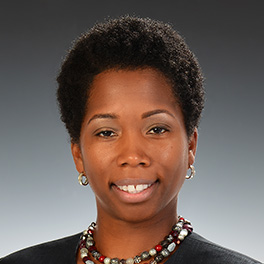
Biscardi took new insights away
from the trainings and workshops.
“The trainings and workshops have been absolutely phenomenal,” said Courtney Biscardi, executive vice president for the Urban League of Broward County. “Not only did they give us new ideas and deeper context of racial equity to consider but they also shared important insights about how challenging this work is and how it really does take time, often years, to develop policies that really move the needle.”
Co-creating Solutions
For many cohort members, who bring a wide array of skills, resources, and experiences from diverse sectors, the ROC program was a catalyst for connection. In Broward County, Florida, the idea of collective impact has taken root in other areas of the community. But a shared focus on small businesses, which make up roughly 95 percent of the business community, was new.
“There are many positive things happening in Broward County, so we need to make sure we are working collaboratively and not duplicating efforts,” said Biscardi of Broward County. “Our focus has been how do we leverage our collective resources and work together to make all of us stronger, so that we can fill those gaps that are not being met.”
The Broward County cohort realized that although they had energy and support behind projects, they lacked data. They found that to help business owners of color seek more funding, secure more contracts, and grow their businesses, they needed a common baseline to measure against.
“As we all know in business, if you truly care about something you track it,” said Gelin of the Broward County Black Chamber of Commerce. “Once we can measure it, then we can start to inform how the policies and practices of local institutions, especially anchor institutions, are working to support Black small business growth.”
Next steps for the cohort include reaching out into the community, particularly those areas hit the hardest by the pandemic, to collect data and hear their perspectives.
“We’re really focused on how we build an inclusive economy and power prosperity for everyone,” said Joseph E. Hovancak, director of the Greater Fort Lauderdale Alliance and the Broward County cohort lead. “It doesn’t matter what zip code you live in, what size business you are, we’re focused on everyone having an equal opportunity for health, wealth, education, and success.”
Continuing this local-first approach, the 2022 ROC Cohort program will focus on equitable workforce development in 11 communities and bring in additional Reserve Bank partners.
- The views expressed here are solely those of the author and do not necessarily reflect the views of the Federal Reserve Bank of Philadelphia or the Federal Reserve System.

